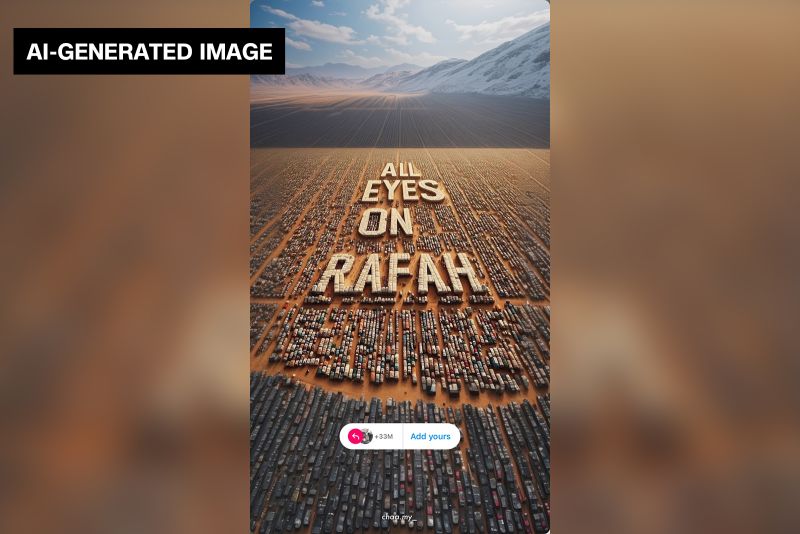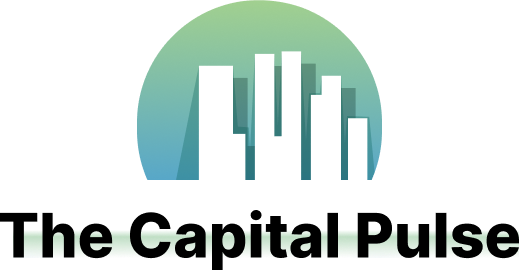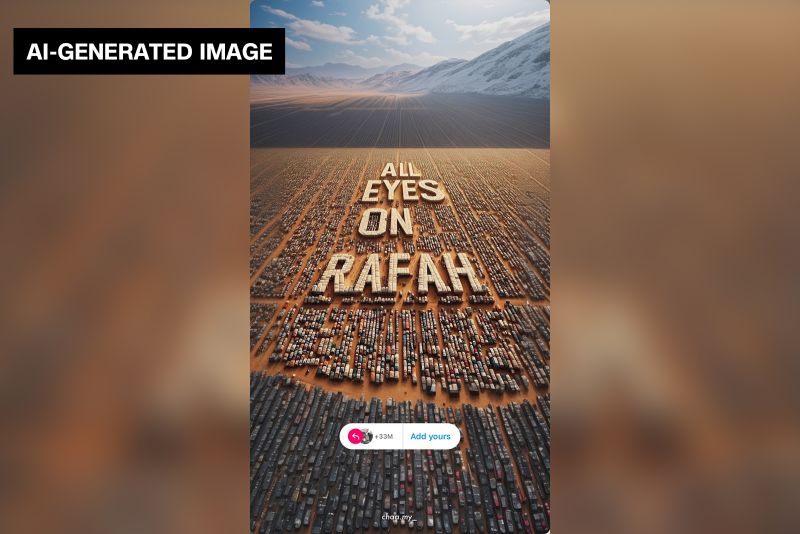
It’s unclear exactly what the image is. A series of tents? Truck beds against a rust orange background? Multicolored rectangles?
Mountains are visible in the background, and in the foreground are the following words: “All Eyes on Rafah” — a reference to the southernmost Gazan city that became the center of war coverage this week, after an Israeli strike on a refugee camp in the city, on what had been labeled a safe zone, killed dozens of already displaced Palestinians.
In the wake of the attack, the aforementioned image has seemingly been everywhere. Likely created using artificial intelligence, the graphic — which is not an actual picture from Rafah or the war in Gaza — has been shared more than 46 million times on Instagram alone.
It’s become so ubiquitous, comedian Tim Dillon noted it’s been shared like “it’s a new show on NBC.”
But the picture’s popularity has raised questions and critiques on the passivity of the act. Eyes being on Rafah has not stopped the violence, wrote scientist Ayesha Khan on Instagram. Simply posting an ambiguous graphic is performative, Khan and others have noted.
Still, the post’s momentum has continued. Here’s where the phrase comes from, where the graphic originated and what it could signal.
Where did ‘All Eyes on Rafah’ come from?
The phrase “All Eyes on Rafah” has been appearing in various graphics and images associated with the war in Gaza for months and is not necessarily tied to this specific viral image.
It likely originated from comments made in February by Rik Peeperkorn, who leads the World Health Organization’s office in the West Bank and in Gaza.
At the time, more than 1.5 million Palestinian refugees, many of whom had been fleeing from the north and the center parts of Gaza, were crammed into the southernmost city of Rafah, which was also undergoing a wave of Israeli airstrikes — attempts to “hit Hamas terrorists in the area,” an IDF spokesperson said.
“All eyes” were on Rafah, Peeperkorn said, a phrase which then became widely used by activists and made its way into graphics, like the one currently going viral.
What makes this image so popular?
There are a few aspects of this image that may have contributed to its popularity, noted Faiza Hirji, an associate professor at Ontario’s McMaster University who studies race, religion and media.
Also, the way the image is being shared on Instagram — with a handy “add yours” feature that allows users to easily repost the image onto their own personal stories — only aids in its viral success. The easier it is to share, the more likely it is that people will do so.
Still, there’s been some criticism of the image. To understand the graphic, the user would need to have some sense of what is actually happening in Rafah and would therefore know that the image being shared does not actually depict the violence and the scale of destruction taking place. For some, this could make the graphic more appealing, while others have argued that the image takes away from what is actually occurring on the ground.
“I think for some people, this also causes a kind of discomfort,” Hirji said. “Because you’re directing everyone’s gaze to an image that doesn’t really show the horror of what happens in conflict zones.”
What does ‘All Eyes on Rafah’ mean?
Others have pointed out that the image does not actually include the words “Palestine” or “Gaza” — names that have been widely politicized even before October 7.
“Rafah does not have the immediate name recognition for people who haven’t been paying attention,” said writer Heben Nigatu on X. “Are people Googling Rafah? Sharing without looking it up?”
Everybody likely has differing motivations behind sharing an image. For some, sharing the image might be a call for others to investigate what’s happening in the region, and in Rafah specifically, Hirji said. Reposting the image could be a way to say to an audience: “Don’t look away. You can’t pretend this isn’t happening.”
Other interpretations are less charitable. Take for instance the argument that the graphic is a performative gesture, an image that can’t be bothered to show the reality in Gaza with a vaguely political statement stamped atop — not dissimilar to the black squares posted on social media during the racial reckoning of 2020.
But unlike debates about racism in the aftermath of George Floyd’s murder, for many people in the West the war in Gaza is not happening close to home. This could make it difficult for people to feel empowered, Hirji said, in terms of their direct ability to affect the war’s outcome.
“I think that many people are powerless and feel that powerlessness,” she said. “Some of it may be performative, but maybe they feel that the only action they can really take at this time is to at least raise awareness. And so this notion of ‘All Eyes on Rafah,’ if it can be a bit informative or educational, then perhaps there’s a sense that this is the action they can take.”
And still, there are worries of “slacktivism,” the notion that all we need to do to change the world is share a single infographic enough times.
“We need far more than performative rallies and symbolic protests that don’t aim to disrupt anything,” wrote Khan. “Bearing witness is still a passive act. And we shouldn’t coddle ourselves pretending like a post a day … is substantial.”
The phrase itself — keeping “eyes on” a place — inherently prioritizes the audience rather than Rafah, creating a distance between the viewers and the victims. And still, Hirji said, even amid calls to not look away, the world often does so anyway.
“It’s important, you could say, that if nothing else, we acknowledge our complicity, or we acknowledge our inaction,” Hirji said. “That’s one interpretation.”
But there’s another interpretation, too, which could be that audiences are setting themselves up as watchers to this trauma, Hirji noted, becoming both indifferent and inactive. History and research of past conflicts in parts of the Middle East or the Global South speak for itself, Hirji said — “often so much of what we do is we watch, we judge, we comment,” even while not knowing enough about the places we are watching or commenting on.
“And is that also a point that some people are trying to make by having this call out? To say: So we’re watching it, now what?” Hirji said. “What happens after watching?”

